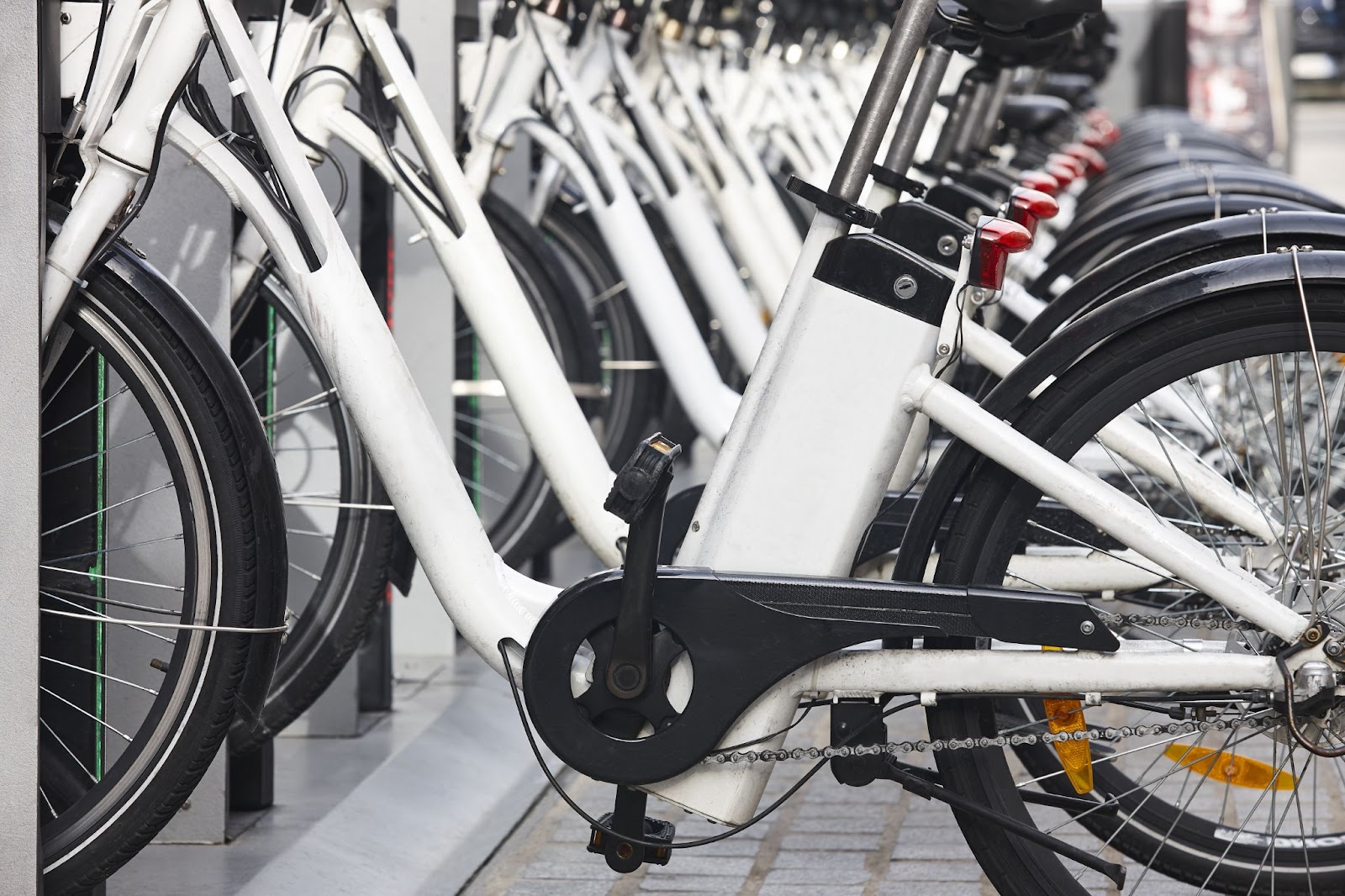One of the key goals of efficiency measures is to decrease energy consumption without reducing quality of life. The beauty of efficiency is that, if done successfully, it can accomplish the same goal with fewer resources. For example, among the wealthiest nations in the world, where living standards are all high, there are significant disparities in yearly greenhouse gas emissions. Switzerland is around 4 tonnes per person, Singapore 5.5, Norway 7 and a half, but Canada, Australia, and the United States all hover above 14 tonnes per capita (Our World in Data). The differences are technology, infrastructure, and behavior.
On the supply side, governments and companies can increase efficiency through incentivizing and creating technological innovation and smart infrastructure, and on the demand side, adopting efficient technologies and behaviors and using more efficient infrastructure are ways countries can achieve high standards of living with far less material and energy consumption (material efficiency is itself a form of energy efficiency as almost all materials come with embodied energy costs).
The One Earth Climate Model (OECM) incorporates various efficiency assumptions into its model that span across technological, infrastructural, and behavioral advances. Doing so predicts a final energy demand of 366 EJ in 2055. In comparison, if current per capita energy consumption was continued, final energy consumption would be 550 EJ, given a projected population of 10 million by the year 2057 (IPCC WGIII Chapter 6).
A study reviewing 153 climate models that attain net-zero emissions demonstrates that the efficiency savings of the OECM may be even greater. As a proxy for a baseline scenario, looking only at models that achieve net zero but don’t keep global temperatures below 2˚C, the median final energy consumption is projected to be 659 EJ the year the models reach net-zero emissions. Depending on your projected baseline, the OECM achieves a reduction in final energy demand of 33%-50% due to deep efficiency gains.
- Technological Efficiency: Our current energy system is majorly inefficient, losing ⅔ of our primary energy to waste heat. Two-thirds of coal’s energy is wasted in the power plant, and nearly 80% of petrol is wasted when burned to propel our cars’ engines. The mere act of electrification, of switching from fossil powered motors to electrical motors, will make our energy system drastically more efficient. Electric motors are 3x more efficient than internal combustion engines, heat pumps are 3-5x more efficient than traditional gas heaters. In general, electrification will be a major boon to efficiency, predicting to decrease our energy needs by 36% by 2050 compared to a world reliant on combustion. Thanks to the steady march of technological progress, solar panels have gotten 10x more efficient in the past decade.
- Infrastructural Efficiency: Infrastructure is the most classic example of choice architecture, where “how choices are presented to people can shape their energy-related decisions.” For example, ensuring widely-available public transit allows people to make energy-efficient commuting decisions.
- Behavioral Efficiency: Once more, efficiency technologies and infrastructures exist, people still need to choose to adopt them or use them. Additionally, behavior has a huge impact on material use if people opt to use items longer, avoid short-lived items, down-size homes or cars, or participate in ride shares.
%2C%20Figure%205.7.png)
Demand-side mitigation options and indicative potentials for greenhouse gas savings, indicated by coloured bars. Potentials in 2050 are estimated using an array of peer-reviewed literature. Mitigation response options related to demand for services have been categorized into three groups: “socio-cultural factors”, related to individual choices, behavior and lifestyle change, and social norms and culture; “infrastructure use”, related to the provision and use of supporting infrastructure that enables individual choices and behavior; and “technology adoption”, which refers to the uptake of technologies by end users. Source: IPCC (2022), Figure 5.7.
To successfully and quickly transition to a 100% renewable energy future, we will rely on efficiency to get us there. In the IPCC’s Sixth Assessment, they highlight that lowering demand through efficiency measures would “significantly reduce” the challenge of mitigation overall, lowering pressure on land, and decreasing our dependence on unproven technologies like carbon removal and BECCS. The better we are at efficiency, the easier the energy transition will be. Efficiency in the energy transition can be broken down into four categories:

Photo | Unsplash
Built Environment
Built structures—homes, commercial buildings, government facilities, roads, bridges, and factories—represent a huge portion of our energy use. Using better technology and proper engineering, it's possible to significantly reduce the materials needed for construction and the energy needed to heat, cool, operate, and light those structures. Smaller homes, for example, require fewer materials to build and less energy to heat and cool. However, it’s still possible to reduce energy consumption while maintaining floor area by energy-smart architecture and using more efficient appliances like heat pumps and induction ovens.
Efficiency in the built environment also includes infrastructure decisions that reduce car dependency, increase access to public transportation, or shorten the energy-distance between people and the things they need access to. The One Earth Climate Model assumed a deep efficiency scenario for commercial buildings, achieving a total 8% reduction in final energy demand by 2050 (despite population and GDP growth). It also assumed a moderate efficiency reduction for residential buildings, achieving a total of 24% reduction in final energy demand with a whopping 68% decrease in electricity demand as a result of gains in technological efficiencies.

Photo: Dreamstime
Transportation Efficiency
However, switching fuels is not the only solution to transforming the transportation sector. Behavior and technological choices drive a large part of our energy needs, evidenced by how car-dependent North America uses 34% of the energy used globally in the transport sector yet only accounts for around 7% of the global population. This suggests that both behavior and infrastructure play a large part in energy demand for the transportation sector. As such, the IPCC calls for “systemic infrastructure changes that enable behavioral modifications and reductions in demand for transport services that can in turn reduce energy demand.” This leads to the most impactful solution in the energy transition for transportation: efficiency.
A broad suite of behavioral, infrastructural and technological changes that move more people with less energy. This includes infrastructure investments in public rail, busing, bicycles, walkability, and PEVs to reduce the dependence on low-efficiency travel like automobiles and airplanes. It could also include policies like remote working, which reduces commuting, as well as weight reduction (lighter vehicles need less energy to move them).
Avoiding transport energy demand includes behavioral changes, better urban planning, increasing the local production of goods, and innovating transport logistics. Sometimes the most efficient transportation is avoided transportation. Increasing the walkability and bikeability of cities, allowing remote work, streamlining freight logistics, and moving production closer to areas of demand are all ways to facilitate the transportation transition. Shifting to more energy-efficient transport modes largely means moving from road to rail for both passenger and freight transit, as well as shifting aviation to navigation.
.jpg)
Photo: Dreamstime
Transmission & Storage
While more ubiquitous than fossil fuels, the potential for renewable energy is not evenly spread throughout the world. Certain areas are sunnier than others, and some are windier. As a necessary aspect of the renewable energy transition, power may be generated far from where it is being consumed. Advances in transmission technology will be necessary to reduce “line loss”—the loss of power between the point of production and the point of consumption.
Additionally, there are times when renewable energy is more available than others—as the classic refrain goes, the sun isn’t always shining and the wind isn’t always blowing. In such cases grid scale storage becomes an integral part of a renewable energy future. Battery storage both allows the transformation of excess energy into useful energy at a later time and allows the grid to become dynamic, ramping up and down supply to match demand.
Several other technologies will be required to modernize the electrical grid to reliably function on a more inconsistent renewable power supply. These measures can include smart grids which function on the supply side to predict and respond to demand fluctuations, smart meters that allow users to customize their energy use (e.g., setting the time of day their EV charges), and load shedding systems that allow the grid to “shed” certain energy uses if demand approaches total supply. Together these technologies will enable the most efficient use of our renewable energy resources.
.jpg)
Photo: Dreamstime
Industrial Processes
Efficiency in the industrial sector will come in many forms. Every industrial sector from agriculture and textiles, to pharmaceuticals and cement will need to reduce its energy demand through intelligent innovation. Aluminum, steel, and cement are three industries that all require massive amounts of heat energy. In the case of aluminum and steel, using recycled “secondary” metals as input material can drastically reduce the energy required to make new steel, up to 74%. Other industries will find efficiency in switching to feedstocks of biological origin or creating biomaterial replacements such as replacing emissions intensive cow leather with leather grown from fungi.
Energy efficiency is intrinsically tied to environmental justice and issues of equity. High rates of energy use make it more difficult to decarbonize the energy system fast enough to stay within the carbon budget for 1.5˚C or even 2˚C. Since OECD countries use nearly ten times more than low-income countries per capita, it’s particularly important for wealthy nations to adopt as many efficiency measures as possible. Reducing our collective energy needs through efficiency will allow us to maintain high standards of living while keeping temperature below the Paris Agreement, and protecting climate vulnerable countries from a warmer world.
-
-
https://www.sciencedirect.com/science/article/pii/S2542519622000924
Achieving the Paris Climate Agreement Goals, Part 2
Global scenarios of resource and emission savings from material efficiency in residential buildings and cars: https://www.nature.com/articles/s41467-021-25300-4
-
.jpg?auto=compress%2Cformat)


